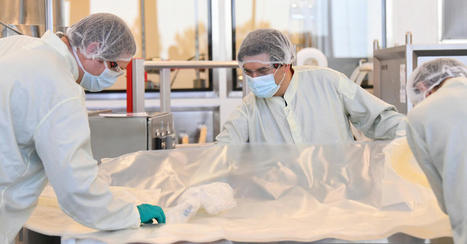Of the dozens of coronavirus vaccines being tested worldwide, the one under development at the University of Queensland was the first to be abandoned. Australia on Friday canceled a roughly $750 million plan for a large order of a locally developed coronavirus vaccine after the inoculation produced false positive test results for H.I.V. in some volunteers participating in a trial study. Of the dozens of coronavirus vaccines being tested worldwide, the Australian one was the first to be abandoned. While its developers said the experimental vaccine had appeared to be safe and effective, the false positives risked undermining trust in the effort to vaccinate the public. Prime Minister Scott Morrison on Friday said that his government would compensate for the loss of 51 million doses it had planned to buy from the Australian consortium in part by increasing orders of vaccines made by AstraZeneca and Novavax. The government has said it plans to begin inoculating citizens by March. “We can’t have any issues with confidence,” he told reporters, “and we are as a nation now, with a good portfolio of vaccines, able to make these decisions to best protect the Australian people.”
The Australian setback showed the missteps that can inevitably occur when scientists, during a pandemic that has killed more than 1.5 million people, rush to condense the usual yearslong process to develop vaccines into a matter of months. But just as the Australian scientists made their announcement, the fruits of that race became clearer. The United States moved a step closer to issuing its first approval for a Covid-19 vaccine, as a panel of experts who advise the Food and Drug Administration endorsed a Pfizer vaccine that is already in use in Britain. The trouble that arose with the Australian vaccine, developed by the University of Queensland and the biotech company CSL, was related to its use of two fragments of a protein found in H.I.V. The protein formed part of a molecular “clamp” that researchers placed on the spikes that surround the coronavirus and allow it to enter healthy cells. The clamp stabilizes the spikes, allowing the immune system to respond more effectively to the vaccine. The use of the H.I.V. protein posed no risk of infecting the volunteers with that virus, the researchers said. But the clamp generated the production of antibodies recognized by H.I.V. tests at higher levels than the scientists had expected. Because H.I.V. tests could not be rapidly re-engineered to account for this, the researchers decided to abandon development of the vaccine. Proceeding could have led to widespread anxiety among Australians that the vaccine could cause AIDS. Early experiments on hamsters showed that the vaccine protected them from the coronavirus. When Phase 1 trials on humans began in July, the 216 volunteers were “fully informed of the possibility of a partial immune response” to the clamp, the University of Queensland and CSL said in a statement on Friday.
The mistake, said John P. Moore, an immunologist at Weill Cornell Medical College in New York, was an “honest error” that cost money, not human lives. “I’m sure a lot of people are very embarrassed by it,” Professor Moore said. “It’s not great to be associated with a mistake like this. But when you’re running at 90 miles an hour, sometimes you trip.”



 Your new post is loading...
Your new post is loading...







